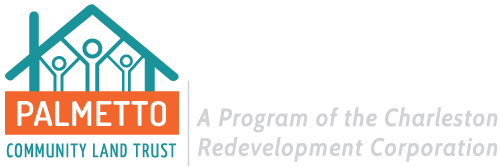Editorial: How carriage houses can help boost Charleston’s affordable housing supply
BY THE EDITORIAL STAFF | THE POST AND COURIER | June 18, 2021
Accessory dwellings — also known as mother-in-law suites, carriage houses or granny flats — are small by definition, often less than 1,000 square feet. And they likely will never play a large role in solving the Charleston region’s significant affordable housing problem.
But the scale of that problem — and the reality that it seems to be getting worse, not better — means there won’t be one big cure-all. So any reasonable potential solutions are worth considering, even the smaller ones.
Charleston City Council should create a new incentive for homeowners to build an accessory dwelling unit on their property. As envisioned, 10 homeowners would receive $20,000 apiece toward building such a unit — if they also agreed to rent it at an affordable rate for a set period. Applications for these grants could be taken late this summer or in the fall.
The city’s Department of Housing and Community Development has the necessary $200,000, partly from the millions of dollars it has collected from developers who pay the city instead of including affordable units in their projects, director Geona Shaw Johnson said.
Some critical details need to be worked out. Ms. Johnson said City Council will have to decide how high rents on the new units can be and how long the rate limits will remain in place. The city also must make sure homeowners know how to apply for grants, particularly if it awards them on a first-come, first-served basis, as currently planned. And the city should be careful not to release any grant money until construction is mostly or completely done.
The city may offer homeowners a choice of pre-approved architectural plans for an accessory unit for free or at a reduced cost; it already has some in hand and may solicit more before deciding which ones to buy and offer for the program.
Paying homeowners to build rental units might seem radical, but city incentives for private property owners have been around for years: The city has awarded many preservation grants to help owners renovate rental properties for lease on affordable terms.
Other cities have encouraged more accessory dwellings, too. Around 2009, Mount Pleasant Town Council approved new rules to allow such units attached to — or next to — existing single-family homes. Since then, almost 300 have been permitted, and more than 200 have been built.
The city of Charleston has no official count of how many accessory dwelling units exist or the number of them built in the past decade, during which time a growing number of planners and housing advocates have pointed to such units as a helpful piece of the affordability puzzle.
Historically, Charleston’s residential properties often housed more than one family. The most obvious examples were quarters for enslaved Africans built as part of or next to adjoining kitchens or carriage houses. Large apartment buildings didn’t appear until the 20th century; the city had tenements that looked much like other residences but often housed multiple families. It all was a way to increase density in an urban setting that is currently so appealing that millions come to visit every year.
Increasing density is an important part of addressing the region’s lack of affordability, and it doesn’t have to affect quality of construction, height, aesthetics, ownership or level of crime — the main factors people consider when looking for a nice place to live.
City Council changed its zoning last year to give homeowners more flexibility to build or renovate accessory apartments, provided they don’t exceed 850 square feet, aren’t used for short-term rentals, house no more than two adults and have at least one off-street parking spot for renters.
We recently received fresh evidence of our region’s affordability problem, as business reporter Warren Wise noted that Charleston rental rates remain the highest of any metro area in our state and are only $400 less than the median rental rates in New York, where exorbitant housing costs are legendary. True, New York’s rental rates took a hit because of the pandemic, but salaries there still remain well above what they are here.
Even if Charleston’s incentive program succeeds, additional accessory dwelling units probably will make up only a small fraction of the 16,351 affordably priced homes and apartments that a recent study showed Charleston will need over the next decade. The median sales price for a home in Charleston County rose to a staggering $536,000 last month — up 34% from May 2020.
We agree with Ms. Johnson that it’s a plus if building a small apartment in the backyard or above a garage helps homeowners pay off their mortgage faster, remain in their homes longer or allows another family member to live close by. And if done right, the program has the potential to be another small part of the affordable housing solution.

